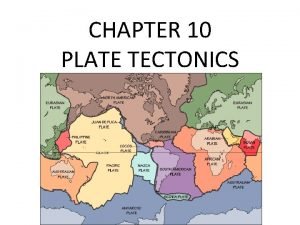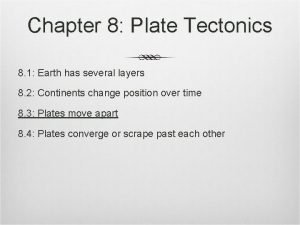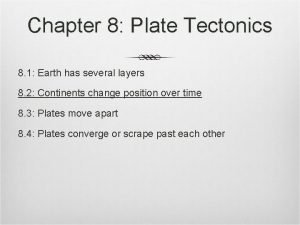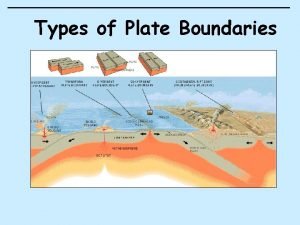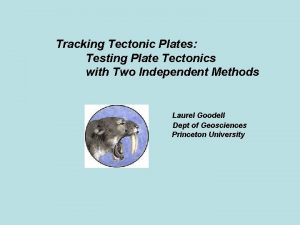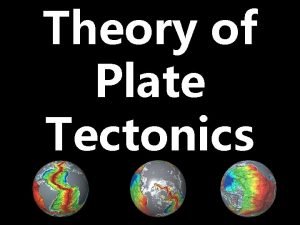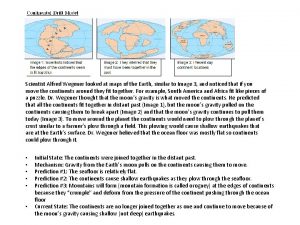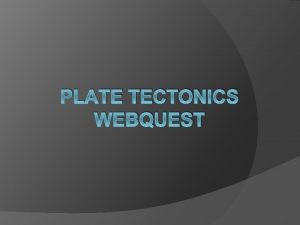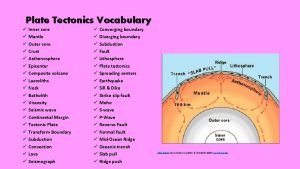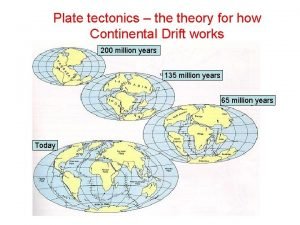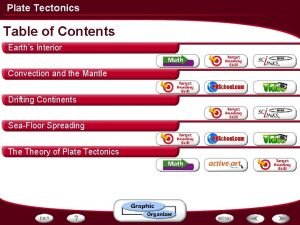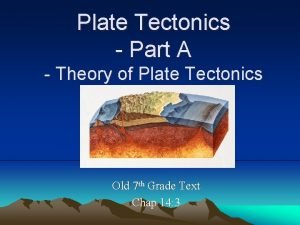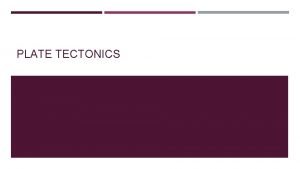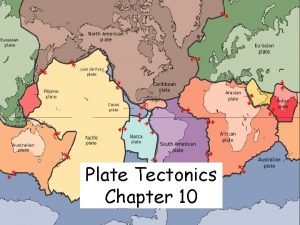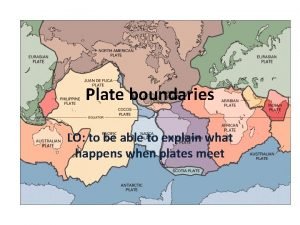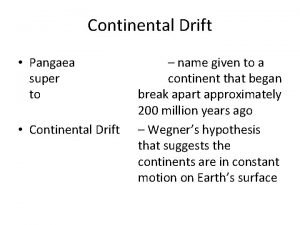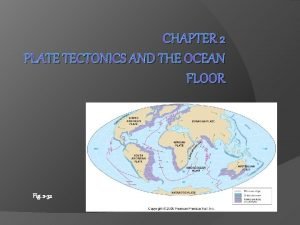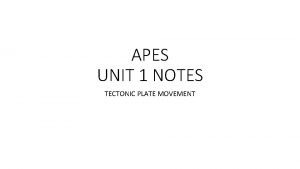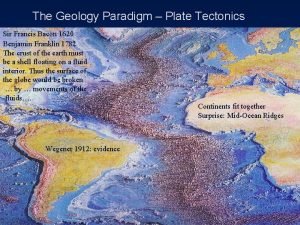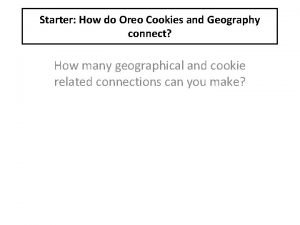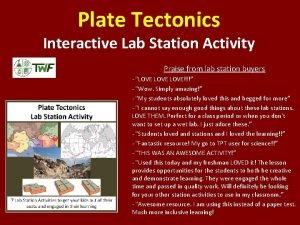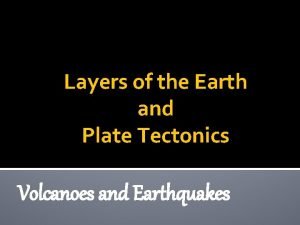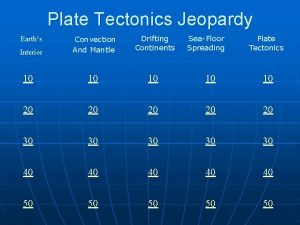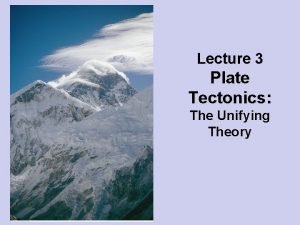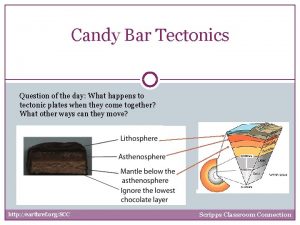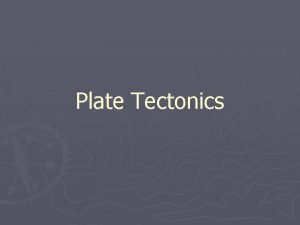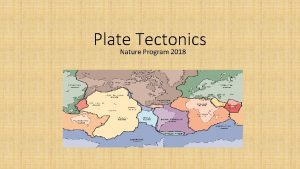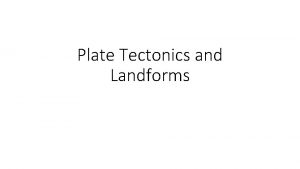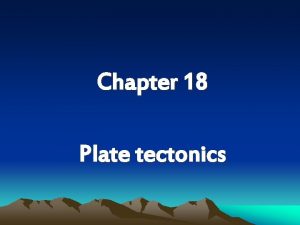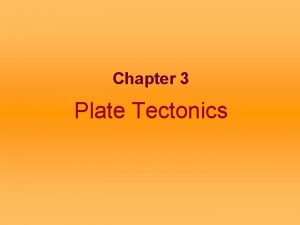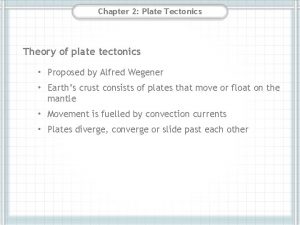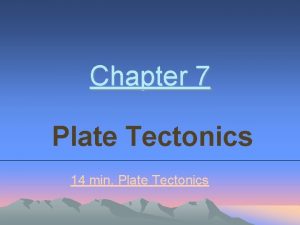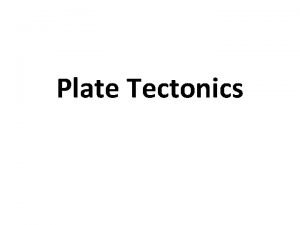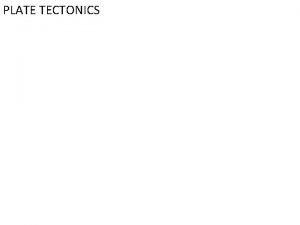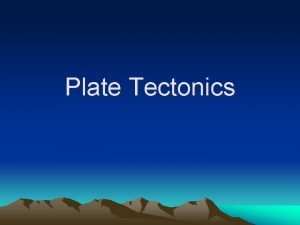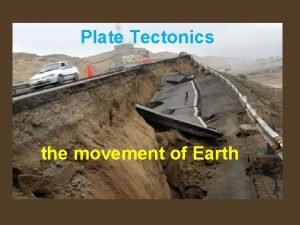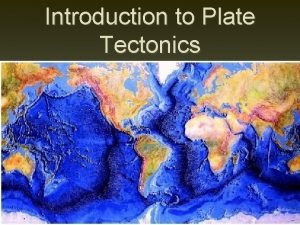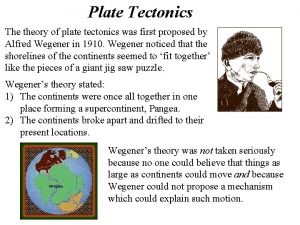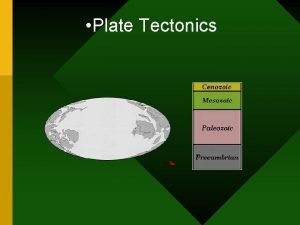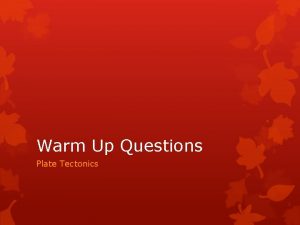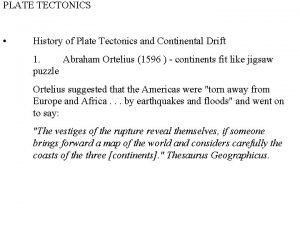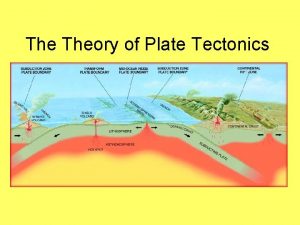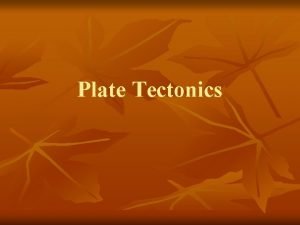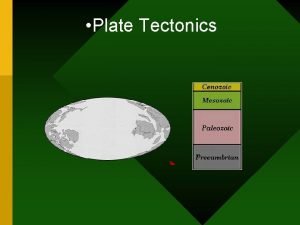Chapter 7 Plate Tectonics Plate tectonics accounts for

































- Slides: 33

Chapter 7 Plate Tectonics Plate tectonics accounts for important features of Earth’s surface and major geologic events.

7 -2 Alfred Wegener’s Hypothesis of Continental Drift (1915) n n ONE single landmass called Pangaea (started splitting about 180 million yrs ago) **Note: Rodinia is the name of the supercontinent that existed about 500 million years ago

Evidence of Pangaea n n n 1. Wegener noticed that the continents seem to fit together (not perfectly because of erosion) 2. plant and animal fossil evidence 3. rock, mineral, and mountain evidence


Continental Drift 225 million years ago

Continental Drift 180 -200 million years ago

Continental Drift 135 million years ago

Continental Drift 65 million years ago

Continental Drift Earth today

Fossil Evidence (climate and location of continents throughout history) n n n Ex: Mesosaurus reptile lived 250 million years ago freshwater lakes, ponds, and rivers (could not live in salty ocean water) fossils found in South America AND Africa ? ? ? How could this be? ?

Fossil evidence


Put Pangaea together activity (look at the EVIDENCE)

(Enrich: law of superposition) Youngest fossils near the surface (get older as you dig down)

n How does fossil evidence support Wegener’s hypothesis of continental drift? • a. Similar fossils found on far apart landmasses suggest that the continents were once a single landmass. • b. Fossil evidence suggests that the continents have always been in their current position. • c. No similarities exist between fossils on different continents. • d. Plant and animal fossils show evidence of changes in Earth’s polarity.

Sadly, most scientists did not accept Wegner’s hypothesis n n n because he could not explain HOW something as large as the continents (rocks) could be moved such a distance he froze to death in 1930 during an expedition crossing the Greenland ice cap …other evidence continued to be gathered by others

n n n What was Alfred Wegener’s hypothesis? a. The continents have always been where they are now. b. Today’s continents were once part of a single land mass that split apart. c. The continents are made of rock. d. The continents will one day join to form a single continent.

Review n Breakup of Pangaea n Continental Drift animation (website) --(start with present day, then go backwards) (website)

Important discoveries n n n 1950’s: rocks on ocean floor found to be younger than rocks that make up the continents—why? ? ? 1960’s: Harry Hess hypothesized “sea-floor spreading” Then it was found that ocean rocks get older and older the farther they are from the crack (midocean ridge)

7 -2 Sea Floor Spreading see mid-Atlantic ridge on map (mostly submerged mountains) >>>sea-floor spreading occurs at these mid-ocean ridges n new ocean floor forms n may build above sea level (island) n plates are moving away from each other (older crust moves out) n Demonstrate Sea-floor spreading with entire class (rearrange the tables) n Interactive Animation of Seafloor Spreading and Magnetic Field Reversals (website)


Sea-Floor Spreading forms Oceanic crust Mid-ocean ridge erupts through subducted through Deep-ocean trenches Molten material forms

Sea-Floor Spreading forms Oceanic crust Mid-ocean ridge erupts through subducted through Deep-ocean trenches Molten material forms

Sea-Floor Spreading forms Oceanic crust Mid-ocean ridge erupts through subducted through Deep-ocean trenches Molten material forms

Sea-Floor Spreading forms Oceanic crust Mid-ocean ridge erupts through subducted through Deep-ocean trenches Molten material forms

Magnetic reversal (iron in ocean rocks show this)


With lots of new evidence from MANY SCIENTISTS n n Wegener’s Continental Drift hypothesis became the Theory of Plate Tectonics by the 1960’s We now know that lithospheric plates move about 2 cm per year.

Review: Lithosphere and Asthenosphere

Lithosphere vs Asthenosphere

Lithosphere divided into 10 major tectonic plates— know the continental ones and the Pacific plate!

Ring of Fire

Tectonic plates usually made of oceanic and continental crust
 Fossils as evidence of continental drift
Fossils as evidence of continental drift Chapter 8 plate tectonics
Chapter 8 plate tectonics Chapter 8 plate tectonics
Chapter 8 plate tectonics Plate tectonics vs continental drift
Plate tectonics vs continental drift Convergent boundary with subduction
Convergent boundary with subduction Plate motion calculator
Plate motion calculator The plate tectonics theory states that:
The plate tectonics theory states that: Compare continental drift and plate tectonics
Compare continental drift and plate tectonics Compare continental drift and plate tectonics
Compare continental drift and plate tectonics Continental drift webquest
Continental drift webquest Inner core vocabulary
Inner core vocabulary Continental drift vs plate tectonics theory
Continental drift vs plate tectonics theory Seafloor spreading material at trenches
Seafloor spreading material at trenches Plate tectonics definition
Plate tectonics definition Driving force of plate tectonics
Driving force of plate tectonics What is this process called
What is this process called Summarize the theory of plate tectonics
Summarize the theory of plate tectonics Harry hess and seafloor spreading
Harry hess and seafloor spreading Continental drift vs plate tectonics
Continental drift vs plate tectonics Plate tectonics test review answer key
Plate tectonics test review answer key Plate tectonic boundaries
Plate tectonic boundaries Plate tectonics with oreos
Plate tectonics with oreos Pangaea
Pangaea From now
From now Plate tectonics definition apes
Plate tectonics definition apes Francis bacon plate tectonics
Francis bacon plate tectonics Oreo cookies and plate tectonics answer key
Oreo cookies and plate tectonics answer key Plate tectonics interactive lab
Plate tectonics interactive lab Oreo tectonics
Oreo tectonics Oreo tectonics
Oreo tectonics Lithosphere definition
Lithosphere definition Plate tectonics game board
Plate tectonics game board Unifying theory of plate tectonics
Unifying theory of plate tectonics Candy bar tectonics
Candy bar tectonics
